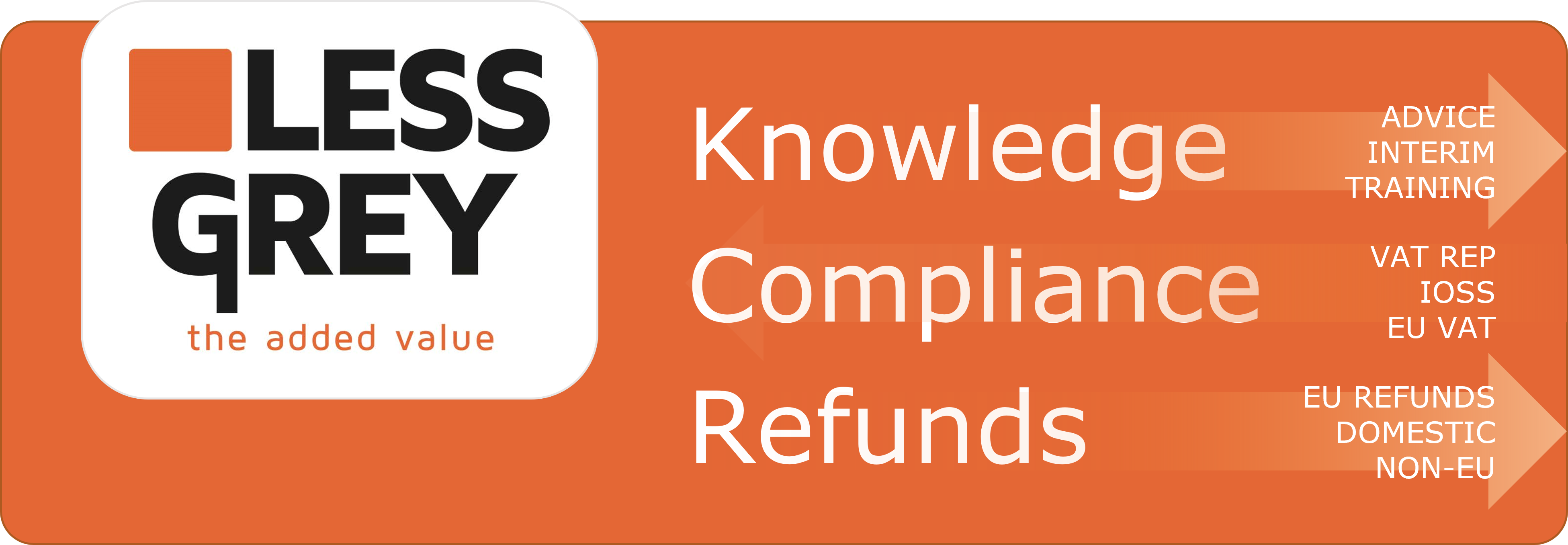On May 15, 2014, the ECJ issued its decision in the case C-480/12 (X BV).
Context: Community Customs Code — Scope of Articles 203 and 204(1)(a) of Regulation (EEC) No 2913/92 — External transit procedure — Customs debt incurred through non-fulfilment of an obligation — Belated presentation of the goods at the office of destination — Sixth VAT Directive — Article 10(3) — Link between the incurring of customs debt and the incurring of VAT debt — Concept of taxable transactions
Article in the EU VAT Directive
Articles 7, 10(3) and 16(1) in the EU VAT Directive 2006/112/EC (Articles 30, 70, 71, 154 to 161 of the EU VAT Directive 2006/112/EC).
Article 30 (Taxable transaction)
‘Importation of goods’ shall mean the entry into the Community of goods which are not in free circulation within the meaning of Article 24 of the Treaty.
In addition to the transaction referred to in the first paragraph, the entry into the Community of goods which are in free circulation, coming from a third territory forming part of the customs territory of the Community, shall be regarded as importation of goods.
Article 70 (Chargeable event)
The chargeable event shall occur and VAT shall become chargeable when the goods are imported.
Article 71
1. Where, on entry into the Community, goods are placed under one of the arrangements or situations referred to in Articles 156, 276 and 277, or under temporary importation arrangements with total exemption from import duty, or under external transit arrangements, the chargeable event shall occur and VAT shall become chargeable only when the goods cease to be covered by those arrangements or situations.
However, where imported goods are subject to customs duties, to agricultural levies or to charges having equivalent effect established under a common policy, the chargeable event shall occur and VAT shall become chargeable when the chargeable event in respect of those duties occurs and those duties become chargeable.
2. Where imported goods are not subject to any of the duties referred to in the second subparagraph of paragraph 1, Member States shall, as regards the chargeable event and the moment when VAT becomes chargeable, apply the provisions in force governing customs duties.
Article 16(1) of the Sixth Directive provided:
1. Without prejudice to other Community provisions, Member States may, subject to the consultations provided for in Article 29, take special measures designed to relieve from [VAT] all or some of the following transactions, provided that they are not aimed at final use and/or consumption and that the amount of [VAT] charged at entry for home use corresponds to the amount of the tax which should have been charged had each of these transactions been taxed on import or within the territory of the country
A. imports of goods which are intended to be placed under warehousing arrangements other than customs;
B. supplies of goods which are intended to be
(a) produced to customs and, where applicable, placed in temporary storage;
(b) placed in a free zone or in a free warehouse;
(c) placed under customs warehousing arrangements or inward processing arrangements;
Facts
- On 26 October 2005, X made an electronic application for a diesel engine to be placed under the external Community transit procedure. The deadline by which that engine should have been presented at the office of destination was set at 28 October 2005.
- That engine was presented to that office only on 14 November 2005, that is to say, 17 days after expiry of the time-limit prescribed, and was placed under the inward processing customs procedure with the application of the drawback system. The customs office in question, after accepting that application, found that the previous customs procedure, namely, the external Community transit procedure, had not been properly terminated and invalidated that placement.
- After apprising X of that situation, the inspector responsible (‘the inspector’) gave X the opportunity to provide proof that it had completed the customs procedure properly, proof which it could not provide. The inspector therefore concluded that the engine at issue in the main proceedings had been removed from customs supervision, within the meaning of Article 203(1) of the Customs Code. On that basis, it requested that X pay customs duties and turnover tax.
- X brought an action before the Rechtbank te Haarlem (District Court, Haarlem), which granted the action and ordered the inspector to repay the amount of customs duties and turnover tax which X had paid. The inspector brought an appeal against that decision before the Gerechtshof te Amsterdam (Regional Court of Appeal, Amsterdam), which upheld the Rechtbank te Haarlem’s decision.
- The Minister van Financiën (Minister for Finance) brought an appeal on a point of law before the Hoge Raad der Nederlanden (Supreme Court of the Netherlands).
- The Hoge Raad der Nederlanden asks what legal consequences should be drawn from the time-limit laid down on the basis Article 356(1) of the Implementing Regulation being exceeded. In particular, according to that court, the question arises whether the failure to respect that time-limit should automatically be regarded as amounting to removal from customs supervision within the meaning of Article 203(1) of the Customs Code, resulting in customs dues being due, or if is it then a question of non-fulfilment of one of the obligations arising from the use of the customs procedure in question, in which case the levy of those duties should be waived if it is established that it is a failure with no significant effect on the correct operation of the customs procedure within the meaning of the final sentence of Article 204(1) of the Customs Code, read in conjunction with Article 859 of the Implementing Regulation. In addition, the referring court considers that if it is decided that a customs debt was incurred on the basis of Article 204(1) of the Customs Code, the question then arises whether turnover tax is due in addition to customs duties.
Questions
(1) (a) Must Articles 203 and 204 of the Customs Code, read in conjunction with Article 859 (in particular Article 859(2)(c)) of the Implementing Regulation, be interpreted as meaning that (merely) exceeding the transportation time-limit set under Article 356(1) of the Implementing Regulation does not lead to a customs debt being incurred by reason of a removal from customs supervision within the meaning of Article 203 of the Customs Code, but to a customs debt being incurred on the basis of Article 204 of the Customs Code?
(b) For Question 1(a) to be answered in the affirmative, is it necessary that the persons concerned supply the customs authorities with information on the reasons for which the time-limit was exceeded or that they at least explain to the customs authorities where the goods were held during the time which elapsed between the time-limit set under Article 356 of the Implementing Regulation and the time at which they were actually presented at the customs office of destination?
(2) Must the Sixth Directive, in particular Article 7 of that directive, be interpreted as meaning that VAT is due when a customs debt is incurred exclusively on the basis of Article 204 of the Customs Code?
AG Opinion
(1) Articles 203 and 204 of Council Regulation (EEC) No 2913/92 of 12 October 1992 establishing the Community Customs Code, as amended by Regulation (EC) No 648/2005 of the European Parliament and Council of 13 April 2005, read in conjunction with Article 859(2)(c) of Commission Regulation (EEC) No 2454/93 of 2 July 1993 laying down provisions for the implementation of Regulation No 2913/92, as amended by Commission Regulation (EC) No 2286/2003 of 18 December 2003, must be interpreted as meaning that merely exceeding the transit time-limit, laid down in accordance with Article 356(3) of Regulation No 2454/93, gives rise, not to a customs debt for removal from customs supervision within the meaning of Article 203 of the Regulation No 2913/92, but to a customs debt under Article 204 of that Regulation.
(2) Having regard to Sixth Council Directive 77/388/EEC of 17 May 1977 on the harmonisation of the laws of the Member States relating to turnover taxes — Common system of value added tax: uniform basis of assessment, as amended by Council Directive 2004/66/EC of 26 April 2004, and in particular the first subparagraph of Article 7(3), must be interpreted as meaning that value added tax on importation is not payable if the goods do not cease to be covered by the customs arrangement, even if a customs debt is incurred under Article 204 of Regulation No 2913/92, as amended by Regulation No 648/2005 owing to a failure to fulfil one of the obligations entailed by use of the customs arrangement under which the goods were placed.
Decision
1. Articles 203 and 204 of Council Regulation (EEC) No 2913/92 of 12 October 1992 establishing the Community Customs Code, as amended by Regulation (EC) No 648/2005 of the European Parliament and of the Council of 13 April 2005, read in conjunction with Article 859(2)(c) of Commission Regulation (EEC) No 2454/93 of 2 July 1993 laying down provisions for the implementation of Regulation No 2913/92, as amended by Commission Regulation (EC) No 444/2002 of 11 March 2002 must be interpreted as meaning that merely exceeding the time-limit for presentation, set under Article 356(1) of Regulation No 2454/93, as amended by Regulation No 444/2002, does not lead to a customs debt being incurred for removal from customs supervision of the goods in question within the meaning of Article 203 of Regulation No 2913/92, as amended by Regulation No 648/2005, but to a customs debt being incurred on the basis of Article 204 of that regulation and that it is not necessary, for a customs debt to be incurred under Article 204 of that regulation, that the interested parties supply to the customs authorities information on the reasons for exceeding the time‑limit set under Article 356 of Regulation No 2454/93, as amended by Article No 444/2002, or on the location of the goods during the time which elapsed between that time‑limit and the time at which they were actually presented at the customs office of destination.
2. The first paragraph of Article 7(3) of the Sixth Council Directive 77/388/EEC of 17 May 1977 on the harmonisation of the laws of the Member States relating to turnover taxes — Common system of value added tax: uniform basis of assessment, as amended by Council Directive 2004/66/EC of 26 April 2004 must be interpreted as meaning that value added tax is due where the goods in question are not covered by the arrangements provided for in that article, even where a customs debt is incurred exclusively on the basis of Article 204 of Regulation No 2913/92, as amended by Regulation No 648/2005.
Summary
ECJ also ruled that import VAT is due, both in the case when the customs debt is incurred based on article 203 and when the debt is based on article 204 of the Customs Code.
Source
Similar ECJ cases
Reference to the case in the other EU MS
Newsletters















